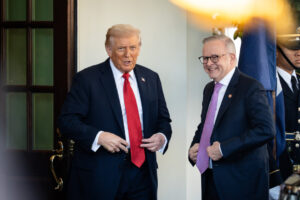
New York Governor Kathy Hochul has faced significant backlash following her directive to the New York Power Authority to construct new nuclear electricity generating stations. This decision, announced in June, has reignited debates on the safety and sustainability of nuclear energy as a power source.
Critics argue that investing in nuclear energy poses inherent risks, citing potential dangers associated with nuclear accidents and long-term waste management. The directive comes at a time when renewable energy alternatives, such as solar and wind, are gaining traction as safer and more sustainable options.
Supporters of nuclear energy contend that it is a crucial component in reducing greenhouse gas emissions and achieving energy independence. They assert that modern reactor designs are significantly safer than older models and that advancements in technology could mitigate many of the risks.
The controversy surrounding this decision reflects broader global discussions about energy policies and climate change strategies. Many in the environmental community are urging a focus on renewable sources rather than investing in nuclear facilities, which they believe may distract from the transition to cleaner energy solutions.
As the New York Power Authority begins to explore the feasibility of new nuclear projects, public opinion remains divided. The directive has prompted discussions in various forums, including town hall meetings and advocacy group panels, where community members express their concerns and hopes for New York’s energy future.
In the wake of this directive, stakeholders from various sectors are weighing in. Environmental organizations are mobilizing to challenge the initiative, arguing that the state should prioritize investments in solar, wind, and other renewable technologies.
The push for nuclear energy in New York is part of a broader trend observed in several regions worldwide, where governments are reconsidering their energy portfolios in light of climate goals. However, the potential for accidents and the unresolved issue of nuclear waste disposal continue to fuel opposition.
The debate on nuclear energy is likely to intensify as public hearings approach, providing a platform for citizens to voice their opinions on this contentious issue. With the state’s energy policies under scrutiny, the outcome may influence not only New York’s energy landscape but also serve as a precedent for other jurisdictions grappling with similar decisions.
As this story develops, both proponents and opponents of nuclear energy will continue to advocate for their positions, shaping the future of energy in New York and beyond.







